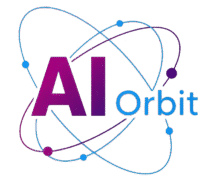The landscape of modern business is being fundamentally reshaped by the rapid advancements in Artificial Intelligence. From automating mundane tasks to uncovering complex insights, AI’s transformative potential is undeniable. Analyst firm Gartner even predicts that by 2027, a significant portion of business decisions will either be fully automated or substantially augmented by AI agents. This signifies not just a trend, but a paradigm shift in how organizations operate and strategize.
However, simply “betting on AI” without a well-defined strategy can lead to pitfalls. Integrating AI successfully into your business operations demands more than just investing in the latest tools; it requires a thoughtful examination of your foundational capabilities and a clear understanding of both the opportunities and the challenges. Drawing from insights shared by leading business executives, here are four critical questions every organization must address before embarking on their AI journey.
WHAT’S YOUR CLOUD STRATEGY?
The journey to becoming an AI-driven enterprise inextricably links with a robust cloud strategy. AI applications, especially those involving large language models (LLMs) and complex data processing, are inherently data-intensive and require scalable, flexible computing infrastructure. The cloud provides this essential foundation, offering the necessary computational power, storage capabilities, and elasticity to support dynamic AI workloads.
Consider the experience of AstraZeneca, a pharmaceutical giant that has been at the forefront of AI implementation. They utilize AI-enabled research assistants to significantly enhance the productivity of their scientific researchers, focusing on improving the reproducibility of scientific methods and accelerating the development of new medicines. Partnering with prestigious academic institutions like Stanford University, AstraZeneca also conducts agentic AI experiments, envisioning teams of AI agents supporting traditional scientists in their complex research endeavors.
Beyond research, AstraZeneca is leveraging AI in commercial applications. Operating in 126 diverse markets, serving varied locations with tailored content presents a formidable challenge. AI has been instrumental in automating the creation of marketing materials and drug development information, streamlining processes that were once labor-intensive and prone to delays. These ambitious AI initiatives have unequivocally demonstrated the tangible benefits of the technology, but they have also underscored a crucial lesson: the absolute necessity of solid data foundations.
According to executives involved in these projects, organizations can only genuinely solve problems with AI if they have built a strong, underlying cloud infrastructure. The mantra is clear: you cannot be truly AI-first without first being cloud-first. A well-architected cloud environment provides the agility, security, and computational resources required to collect, process, and analyze the vast amounts of data that fuel modern AI applications, making it the bedrock for any meaningful AI adoption.
HAVE YOU ADDRESSED DATA GOVERNANCE CONCERNS?
While the allure of AI’s capabilities is strong, the enthusiasm must be tempered by a rigorous focus on data governance. For businesses, particularly those operating in regulated industries, data governance is not merely a technical consideration but a fundamental pillar of trust and compliance. The chief data officer for wholesale banking at Truist highlighted two pivotal lessons from their AI rollout: the paramount importance of the underlying data foundation and the need to manage expectations regarding AI deployment in an enterprise setting.
In a banking environment, the stakes are incredibly high. Organizations must unequivocally prove the origin, accuracy, governance, lineage, metadata, and quality checks of their data to external regulators. This stringent requirement means that a large language model cannot simply be “released into the wild” or pointed at just any internal data sources. It must interact solely with governed and authorized provisioning points. This strict focus on regulated data sources often reveals a common challenge for many Chief Data Officers (CDOs): the lack of sufficiently reliable and well-organized data sources to feed their AI initiatives. The foundational work of getting data in order, ensuring its cleanliness and accessibility, must precede any advanced AI implementation.
Furthermore, there’s a widespread misconception among employees, often stemming from their personal experiences with consumer-grade AI tools, that deploying LLMs in an enterprise environment is a simple, ‘point-and-click’ process. This is far from the truth. Implementing AI in a business context demands the definition of stringent guardrails around what models can access and analyze. It requires meticulous attention to defining metadata to guide the models’ interpretations, a process that is often time-consuming and complex.
Truist’s team actively addresses these staff misconceptions through careful expectation-setting exercises. As real-world use cases are enabled, employees begin to understand that enterprise-grade AI is not as straightforward as a personal AI assistant. While technology implementation has undoubtedly accelerated, it remains a challenging endeavor that necessitates considerable time and strategic thought, particularly concerning the establishment of robust governance and structure around AI before it can be effectively deployed across the organization.
WHAT’S THE QUALITY OF YOUR OUTPUTS?
The success of AI adoption within an organization hinges critically on the quality and trustworthiness of its outputs. Anahita Tafvizi, Chief Data and Analytics Officer at Snowflake, emphasized this point, explaining how her team not only develops AI-enabled products for customers but also serves as the inaugural internal customer, rigorously experimenting with these technologies before widespread deployment.
Snowflake’s development of AI-enabled assistants for their internal sales organization provided valuable insights into the inherent tension between the velocity of innovation and the imperative of governance. A central question that consistently arose was: “Is 95% quality good enough?” This seemingly small percentage difference can have profound implications, especially in critical business functions where errors can lead to significant financial or reputational damage. When AI is integrated into daily workflows, staff must have absolute trust in the accuracy and reliability of the AI-generated information or recommendations.
Business leaders must meticulously consider these quality challenges. If employees do not trust the AI’s outputs, adoption will stagnate, and the promised benefits will remain elusive. Ensuring high-quality results necessitates more than just advanced algorithms; it demands a comprehensive approach to data and system integrity. This includes implementing the right governance structures, establishing stringent access controls, maintaining clear data lineage, and utilizing robust metadata and semantic models. These elements are not merely add-ons; they are critical components that continuously balance the drive for innovation with the fundamental need for reliable and accountable AI solutions.
Without a strong focus on quality and the underlying data infrastructure that supports it, AI projects risk producing unreliable insights, eroding user confidence, and ultimately failing to deliver on their transformative promise. The question of “good enough” must be rigorously defined and continuously evaluated to ensure AI genuinely enhances, rather than detracts from, business operations.
HAVE YOU CONSIDERED UNANTICIPATED BENEFITS?
While the primary focus of AI implementation often centers on automating manual processes and reducing operational efforts, smart organizations are discovering that the technology frequently yields significant, often unanticipated, benefits. Thomas Bodenski, Chief Data and Analytics Officer at finance technology specialist TS Imagine, shared compelling examples of how AI has not only reduced employee workloads since October 2023 but also unlocked entirely new levels of efficiency and capability.
Bodenski highlighted that the true value of AI extends beyond simple effort reduction. He noted that AI enables businesses to “do things faster, better, and have an unbelievable coverage improvement as well.” A prime illustration of this is TS Imagine’s process for handling data updates from specialist vendors. The company receives approximately 100,000 emails annually detailing upcoming product changes. Traditionally, each email had to be meticulously read and its implications understood – a work-intensive process consuming an average of two and a half full-time equivalents per year. This task was not only time-consuming but also incredibly stressful, given the catastrophic consequences of missing critical information. If an update was overlooked, trading systems could go down, preventing thousands of traders from executing trades and risk managers from assessing exposure.
By leveraging Snowflake’s AI models, TS Imagine has transformed this process. The AI now diligently completes this time-intensive work, ensuring that no crucial update is ever missed. This automation has freed up the two and a half full-time equivalents, allowing them to shift from manual data curation and entry to higher-value knowledge work, contributing more strategically to the business. This demonstrates AI’s capacity to not just automate, but to elevate human potential by offloading repetitive, high-stakes tasks.
Another significant unanticipated benefit emerged in managing customer requests during previously unstaffed periods, specifically Saturdays. Traditionally, no human personnel were available to address these inquiries. Now, AI agents can respond to customer inquiries and intelligently assign tickets to the appropriate personnel, ensuring continuous customer service and operational responsiveness that was previously impossible. This highlights AI’s ability to fill critical operational gaps and enhance overall service delivery, creating value beyond initial expectations.
EMBRACING AI WITH STRATEGY AND FORESIGHT
The journey towards an AI-powered future is not merely a technological upgrade but a strategic transformation. As businesses increasingly explore the immense potential of Artificial Intelligence, the insights from leading executives underscore that success lies not just in adopting the technology, but in laying robust foundations and asking the right questions.
To truly harness AI’s power, organizations must:
By thoughtfully addressing these four critical questions, businesses can move beyond mere experimentation to truly embed AI into their core operations, driving innovation, enhancing productivity, and securing a competitive edge in an increasingly intelligent world. The future belongs to those who embrace AI not just as a tool, but as a strategic partner in their ongoing evolution.

